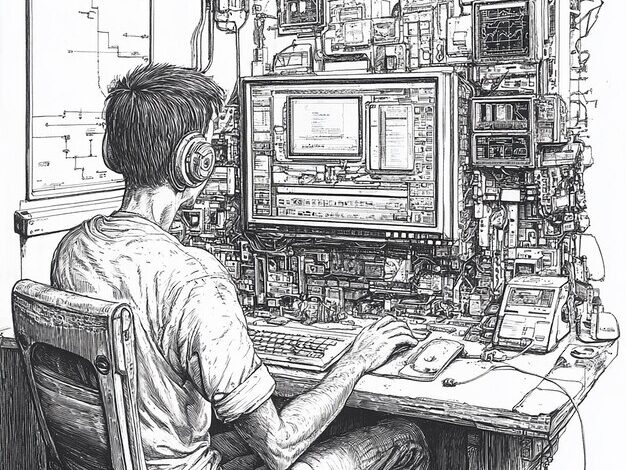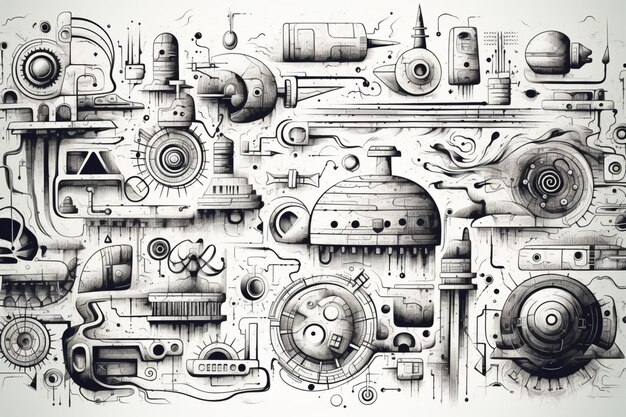Exploring the Art of Pencil Lettering in the Digital Age

In a world where digital tools and technologies dominate the art scene, there is a growing appreciation for traditional techniques that offer a personal, handcrafted touch. One such technique that has seen a resurgence in recent years is “nombre de conflex dibujado con lapiz” which translates to “Conflex name drawn with pencil” in English. This unique art form involves creating intricate, flowing lettering by hand using a pencil, and it’s especially popular among those who seek to combine traditional methods with a modern twist. In this article, we will explore what “nombre de conflex dibujado con lapiz tech” is, its origins, the techniques involved, and how it fits into the world of both traditional and digital design.
What is “nombre de conflex dibujado con lapiz”?
“Nombre de conflex dibujado con lapiz” refers to the technique of hand-drawing names or words using flowing, connected letterforms, often in a free-flowing, dynamic style. The term “Conflex” is derived from the idea of flexible, curving lines that connect the letters smoothly, creating a harmonious and fluid look. This style is often used for artistic lettering, where each letter is not only legible but also visually pleasing and expressive.
In essence, “Conflex” represents a form of calligraphy or stylized typography, where the artist uses their creativity to make each letter flow into the next, often using curving lines and organic shapes. The pencil aspect adds a level of softness, subtlety, and texture that can be difficult to achieve with digital tools. By drawing by hand, the artist has complete control over the shapes and flow of the letters.
The Role of Technology in “nombre de conflex dibujado con lapiz tech”
When we combine the terms “nombre de conflex dibujado con lapiz” with “tech,” we are entering a fascinating intersection of traditional art techniques and modern technology. While pencil drawing is an inherently analog art form, technology has found ways to enhance and expand the possibilities of this technique.
- Digital Tools for Enhancement: Many artists now use digital platforms to refine their pencil-drawn lettering. For instance, after sketching a “nombre de Conflex” with pencil on paper, artists can scan their work and then use software like Adobe Illustrator, Photoshop, or Procreate to add color, texture, and other effects. This blend of pencil art and digital tools allows for more versatility in the design, making it easier to modify, scale, and adapt the artwork for different uses.
- Tech-Assisted Drawing Tools: With the rise of digital tablets and styluses (such as the iPad Pro and Apple Pencil), artists can mimic the feel of pencil drawing while using the convenience and flexibility of digital platforms. These tools provide the freedom of hand-drawing while offering the advantages of digital art creation, such as easy editing, layering, and undoing mistakes. The precision of tech tools complements the free-flowing nature of the “Conflex” style, allowing for greater control over details.
- Online Tutorials and Communities: The internet has made it easier for artists to learn and share techniques. Through platforms like YouTube, Instagram, and various online design communities, artists can find tutorials on how to master the “nombre de Conflex” technique, whether digitally or with traditional pencils. These online resources often provide step-by-step guides, tips on materials, and inspiration for creating unique “Conflex” lettering.
Techniques for Creating a “nombre de conflex dibujado con lapiz”
Creating a name in the “Conflex” style with pencil requires a combination of basic drawing techniques, creativity, and patience. Whether you are drawing it by hand or using digital tools, the process remains similar. Here’s a breakdown of the steps involved:

1. Sketching the Name or Word
Start by writing out the name or word you want to transform into “Conflex” style. You can begin with a basic, light pencil sketch. Don’t worry about making it perfect at first; the goal here is to focus on layout and proportion. Start with block letters or simple forms that you can later refine.
2. Defining the Flow and Connection of Letters
The key to “Conflex” lettering is creating smooth, flowing connections between the letters. Once the basic shapes are sketched out, start adjusting the spacing and angle of the letters to ensure they connect in a natural and dynamic way. You want the flow between letters to feel effortless, as if the pencil was moving fluidly from one letter to the next.
This is where the “flex” aspect of the style comes into play. The letters should have curves and shapes that emphasize movement and connection. You may need to erase and adjust your work several times to get the right look.
3. Adding Details and Flourishes
After the basic structure is in place, you can start adding decorative elements like flourishes, loops, or swirls. These details enhance the visual interest of the lettering and make it feel more dynamic. Be careful not to overdo it; the flourishes should complement the flow of the letters, not distract from them.
At this stage, you may also want to adjust the thickness of the lines in your drawing. Thicker areas can add depth and emphasis, while thinner areas can highlight the delicate nature of the pencil lines.
4. Shading and Texture
One of the unique aspects of “nombre de conflex dibujado con lapiz” is the ability to add shading and texture to the design. Using a softer pencil, such as 2B or 4B, you can gently shade the edges of the letters to give them a three-dimensional look. This shading can also be used to emphasize certain parts of the word or name, making it pop off the page.
If you’re working digitally, shading can be added with different brush settings to simulate the texture of pencil work. This allows you to create a soft, hand-drawn look even if you’re using a digital tool.
5. Refinement and Final Touches
Finally, take a step back and assess your drawing. Erase any unnecessary lines and refine the edges to create a clean, polished look. Pay attention to the balance between light and dark areas, and make sure the letters flow together seamlessly. If you’re working digitally, you may want to adjust the colors, add a background, or even experiment with digital effects to enhance the final piece.
Applications of “Nombre de conflex dibujado con lapiz Tech”
The beauty of “nombre de Conflex dibujado con lápiz tech” is that it can be applied to various fields, both traditional and modern. Whether you’re an artist, designer, or someone looking to add a personal touch to your work, the possibilities are endless.
- Branding and Logo Design: The flexibility and uniqueness of the Conflex style make it ideal for creating custom logos and brand identities. Companies that want a distinctive and personalized logo can benefit from this style, especially in industries like fashion, art, and lifestyle.
- Tattoos: The fluidity and personal nature of the “Conflex” lettering make it a popular choice for custom tattoo designs. Many tattoo artists use this technique to create intricate, meaningful designs that resonate with their clients.
- Art Prints and Merchandise: “Nombre de conflex dibujado con lapiz” can also be used in the creation of art prints, posters, and merchandise like T-shirts, mugs, and notebooks. The combination of pencil-drawn artistry and digital enhancement makes these designs versatile and adaptable for a variety of products.
- Personalized Gifts: If you’re looking for a unique gift idea, consider creating a personalized name or word in the “Conflex” style. Whether it’s for a wedding, birthday, or anniversary, a custom hand-drawn name can make a thoughtful and memorable gift.
Conclusion
“Nombre de conflex dibujado con lapiz tech” is a beautiful and creative way to blend traditional art techniques with modern technology. By hand-drawing intricate lettering with pencil and enhancing it through digital tools, artists can create unique, personalized designs that are both timeless and contemporary. Whether used for branding, tattoos, or personal projects, this technique provides endless opportunities for artistic expression. As we continue to navigate the digital age, the marriage of hand-drawn techniques and digital tools offers a new realm of possibilities, where traditional artistry can thrive alongside cutting-edge technology.



